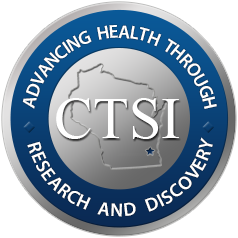Traumatic brain injury causes platelet adenosine diphosphate and arachidonic acid receptor inhibition independent of hemorrhagic shock in humans and rats. J Trauma Acute Care Surg 2014 May;76(5):1169-76
Date
04/22/2014Pubmed ID
24747445Pubmed Central ID
PMC4065716DOI
10.1097/TA.0000000000000216Scopus ID
2-s2.0-84899787815 (requires institutional sign-in at Scopus site) 111 CitationsAbstract
BACKGROUND: Coagulopathy in traumatic brain injury (CTBI) is a well-established phenomenon, but its mechanism is poorly understood. Various studies implicate protein C activation related to the global insult of hemorrhagic shock or brain tissue factor release with resultant platelet dysfunction and depletion of coagulation factors. We hypothesized that the platelet dysfunction of CTBI is a distinct phenomenon from the coagulopathy following hemorrhagic shock.
METHODS: We used thrombelastography with platelet mapping as a measure of platelet function, assessing the degree of inhibition of the adenosine diphosphate (ADP) and arachidonic acid (AA) receptor pathways. First, we studied the early effect of TBI on platelet inhibition by performing thrombelastography with platelet mapping on rats. We then conducted an analysis of admission blood samples from trauma patients with isolated head injury (n = 70). Patients in shock or on clopidogrel or aspirin were excluded.
RESULTS: In rats, ADP receptor inhibition at 15 minutes after injury was 77.6% ± 6.7% versus 39.0% ± 5.3% for controls (p < 0.0001). Humans with severe TBI (Glasgow Coma Scale [GCS] score ≤ 8) showed an increase in ADP receptor inhibition at 93.1% (interquartile range [IQR], 44.8-98.3%; n = 29) compared with 56.5% (IQR, 35-79.1%; n = 41) in milder TBI and 15.5% (IQR, 13.2-29.1%) in controls (p = 0.0014 and p < 0.0001, respectively). No patient had significant hypotension or acidosis. Parallel trends were noted in AA receptor inhibition.
CONCLUSION: Platelet ADP and AA receptor inhibition is a prominent early feature of CTBI in humans and rats and is linked to the severity of brain injury in patients with isolated head trauma. This phenomenon is observed in the absence of hemorrhagic shock or multisystem injury. Thus, TBI alone is shown to be sufficient to induce a profound platelet dysfunction.
Author List
Castellino FJ, Chapman MP, Donahue DL, Thomas S, Moore EE, Wohlauer MV, Fritz B, Yount R, Ploplis V, Davis P, Evans E, Walsh MMESH terms used to index this publication - Major topics in bold
AdultAnimals
Arachidonic Acid
Blood Coagulation Disorders
Blood Coagulation Tests
Blood Platelets
Brain Injuries
Case-Control Studies
Disease Models, Animal
Female
Glasgow Coma Scale
Humans
Male
Middle Aged
Platelet Activation
Platelet Function Tests
Prospective Studies
Purinergic P2Y Receptor Antagonists
Rats
Rats, Sprague-Dawley
Reference Values
Risk Assessment
Shock, Hemorrhagic
Statistics, Nonparametric
Thrombelastography









